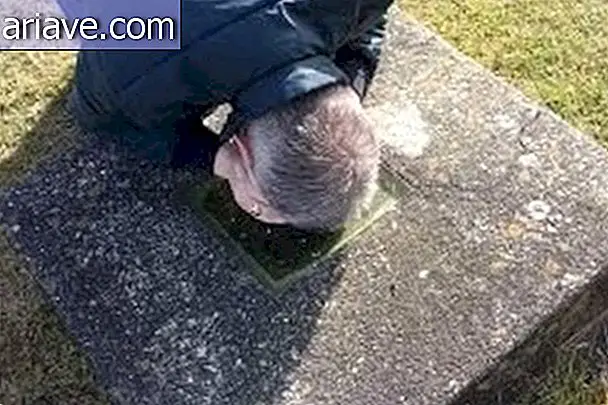Meet 7 Egyptian inventions that are still used today
We all know how ancient Egyptians were of great importance throughout humanity, contributing to the development of the most diverse areas, such as architecture, engineering, writing and calendar counting.
Of course, the pyramids and all their legacy are the highlight of this ancient people. But it was not only they who made the Egyptians known for their inventions, and many others continue to this day.
What may have been the most advanced civilization the world has ever known has brought us artifacts, devices, and ways of doing some things that a lot of people don't even think they created. Check out some of them below, according to a How Stuff Works article:
1 - Eye Makeup

In all the sarcophagus illustrations, pharaohs' tombs, any other type of place and documents from ancient Egyptians showing people, it is clear that their eyes are highlighted by a kind of contoured makeup.
It is estimated that the creation of eye makeup by the ancient Egyptians took place around 3, 000 years before Christ. And since then it can be said that style has never gone out of style. What's even more interesting is that some cultures still use Egyptian techniques for thousands of years to create their eye pigments.
To make this makeup, which was usually black or green (if combined with malachite ore) very dark, the Egyptians made a paste by mixing oils, galena (lead sulfide) and charcoal soot. This mixture was named Kohl (or kajal), and it was not restricted to women, as men and children also used.
In addition to the ornamental part, they believed that Kohl protected the eyes from disease and aggressive sun rays. However, over time it was used more often for beauty, and the higher the social class, the more makeup they wore as a form of power. Cleopatra enjoyed it a lot.
2 - Calendar

Whenever you check the time for that long-awaited holiday on a calendar, thank the ancient Egyptians (not for the holiday, but for the calendar). Can you imagine the mess that would be the world without a system of counting days, months and years? A chaos!
In ancient Egypt, too, until they invented the system as a form of survival at first. This is because not knowing the period of annual flooding of the Nile River could lead to various tragedies, starting with the loss of crops and, consequently, famine.
For this reason, they created a calendar that was closely linked to agriculture, divided into three main seasons: flood, growth and harvest. Each of these seasons had four months, each of which was divided into 30 days.
The sum of all these periods was 360 days, a little less than a real year. To make up for the difference, the Egyptians added five days between harvest and flood seasons. These five days were designated as religious holidays set aside to honor the sons of the gods.
3 - Mint candy

The desire for fresh breath is not from today. In addition to the creation of toothpaste (which we will see later), the Egyptians may actually have been responsible for inventing the refreshing mint mints to disguise it as a possible pharaoh's goat breath.
Back then, bad breath was also a symptom of poor dental health and carelessness. They had no sugary, sweet drinks that caused tooth decay, but there were other things that spoiled their teeth.
The stones they used to grind bread flour deteriorated into the mass in sand and gravel, which were eventually consumed and frayed the enamel of the teeth to expose the pulp, making them vulnerable to infection. The problem is that they had no dentists and no caregivers of this body part.
Then the Egyptians suffered from worn teeth, diseased gums, and aches and pains, all of which created unavoidable bad breath. To deal with this, they invented the first candies, which were a combination of honey-boiled incense, myrrh and cinnamon that were shaped into pellets.
4 - Bowling

Getting friends together and playing a game of bowling may have started well before we could imagine: back in ancient Egypt. The sport of throwing a ball and knocking down the pins, however, was a little different, according to some archaeological findings.
In Narmoutheos, a settlement about 90 kilometers south of Cairo (dating from the second and third centuries after Christ), a room containing a set of runways and a collection of granite balls of various sizes was discovered. According to How Stuff Works, the place looked like a prototype of a modern-era bowling hall.
Unlike today's bowling, where the goal is to knock down the pins, Egyptian players struggled to hit the ball into a central hole. Competitors would stand on opposite sides of the track and try to roll balls of different sizes there and could also try to hit the opponent's ball to divert it from the right course.
5 - The practice of shaving and haircutting

The Egyptians did not have much patience for hair or hair, for reasons of hygiene or even withstanding the heat they could cause due to the warm place in which they lived. Possibly due to these issues, they cut their hair very short or shaved their heads regularly.
And it wasn't just that. Many of them shaved every body hair, like some priests, who performed this general waxing every three days. The care was such that for much of its history, being shaved was considered elegant and having hair could be considered a sign of poor social status.
For these reasons, the Egyptians pioneered the invention of the first razors, one of which was a set of sharp stone blades attached to wooden handles, later replaced by copper blades. Of course, the Egyptians also created the profession of barber.
But an interesting point is that much of the cropped hair was used to make wigs for wealthy aristocrats, who used them on special occasions. False beards were also produced and used by both kings and ordinary citizens, and royalty had the privilege of longer beards.
6 - Plow for planting

As good farmers as they were, the Egyptians were improving the planting system, and the plow may have come from that time, although historians are not absolutely sure of that fact. Evidence suggests that the Egyptians and Sumerians were among the first societies to employ their use around 4, 000 BC.
Odds indicate that these objects were constructed from modified hand tools, but they were not able to dig as deeply into the ground as the more modern versions.
Ancient murals depict a group of four men pulling a plow across a field, which was not a good idea in the scorching Egyptian sun. That all changed about 2, 000 years before Christ, when the Egyptians had the idea of tying their plows into oxen.
Early models were connected to cattle horns, but they found that it interfered with the animal's ability to breathe. Later versions incorporated a belt system and were much more effective. The plow revolutionized agriculture in ancient Egypt and, combined with the steady pace of the Nile River, made cultivation easier for the Egyptians than perhaps any other society of the time.
7 - Toothpaste

As we mentioned earlier in item 3, the condition of the teeth of the Egyptians were not the best and they suffered from many problems of wear and infection. But still, they were trying their best to keep their teeth clean as far as possible at the time.
According to How Stuff Works, archaeologists found toothpicks buried next to the mummies, which were apparently placed there so that they could wipe food scraps between their teeth in the afterlife.
The Egyptians also bear the title of inventors, along with the Babylonians, of the first toothbrushes, which were frayed ends of wooden branches at first. But besides all that, if you had a brush, you had to have paste, so they were also credited as the creators of toothpaste.
However, the pastinha was quite different from what we have today, being a mixture of ingredients such as ox hoof dust, ashes, burnt eggshells and pumice.
The taste was probably terrible, but with so many abrasive items he might even get some good barnacles from the teeth of the Egyptians. Later the formula was enhanced with rock salt, mint, dried iris flowers and peppercorns.











